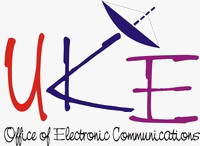Beginning of implementation of digital terrestrial TV in Poland
Thursday, October 1st, 2009
The President of Poland’s Office of Electronic Communications (UKE – Urząd Komunikacji Elektronicznej) has granted general exclusive frequency license for the terrestrial broadcasting digital TV programme services in first DVB-T multiplex (MUX1).
On 30 September 2009 the President of UKE issued decision no.: DZC-WTV-5157-4/09 (180) concerning modification of the frequency licences granted to the following entities for the broadcasting analogue TV programme services:
- Telewizja Polska SA,
- Telewizja Polsat SA,
- TVN SA,
- Polskie Media SA,
- Telewizja Puls Sp. z o.o.
The above mentioned modification concerns determination of the end-date of analogue TV frequencies usage and assignation of frequencies for digital broadcasting of TV programme services (TVP1, TVP2, TVP3, POLSAT, TVN, TV4 i PULS) in MUX1.
The decision also determines MPEG-4 (AVC/H.264) as video coding standard which will be used in MUX1.
Pursuant to the decision of the President of UKE, above mentioned broadcasters have obtained rights to part of frequency resources assigned for the broadcasting of TV programme services in MUX1, however:
- Telewizja Polska SA (Polish Public TV) until 31 June 2013 (till the end of the transition period in Poland)
- Telewizja Polsat SA, TVN SA, Polskie Media SA and Telewizja Puls Sp. z o.o. until 29 September 2024 (under condition of obtaining programme licence).
After 31 June 2013 analogue TV in Poland will be switched off. Polish Public TV will be able to broadcast their programme services on their own multiplex (MUX3).
During the validity of the general exclusive frequency license, entity or entities which will obtain authorisations from all co-owners of MUX1 may request radio license for the use of radio equipment utilising the frequencies subject to a frequency license.
In 30 September 2009 the decision concerning frequency license for MUX1 was received by all parties to administrative proceedings.
Latest News
- Netflix posts first quarter 2024 results and outlook
- Graham Media Group selects Bitmovin Playback
- Dialog, Axiata Group, Bharti Airtel agree on merger in Sri Lanka
- Yahoo brings identity solutions to CTV
- Plex has largest FAST line-up with 1,112 channels
- TV3 migrates from on-prem servers to AWS Cloud with Redge